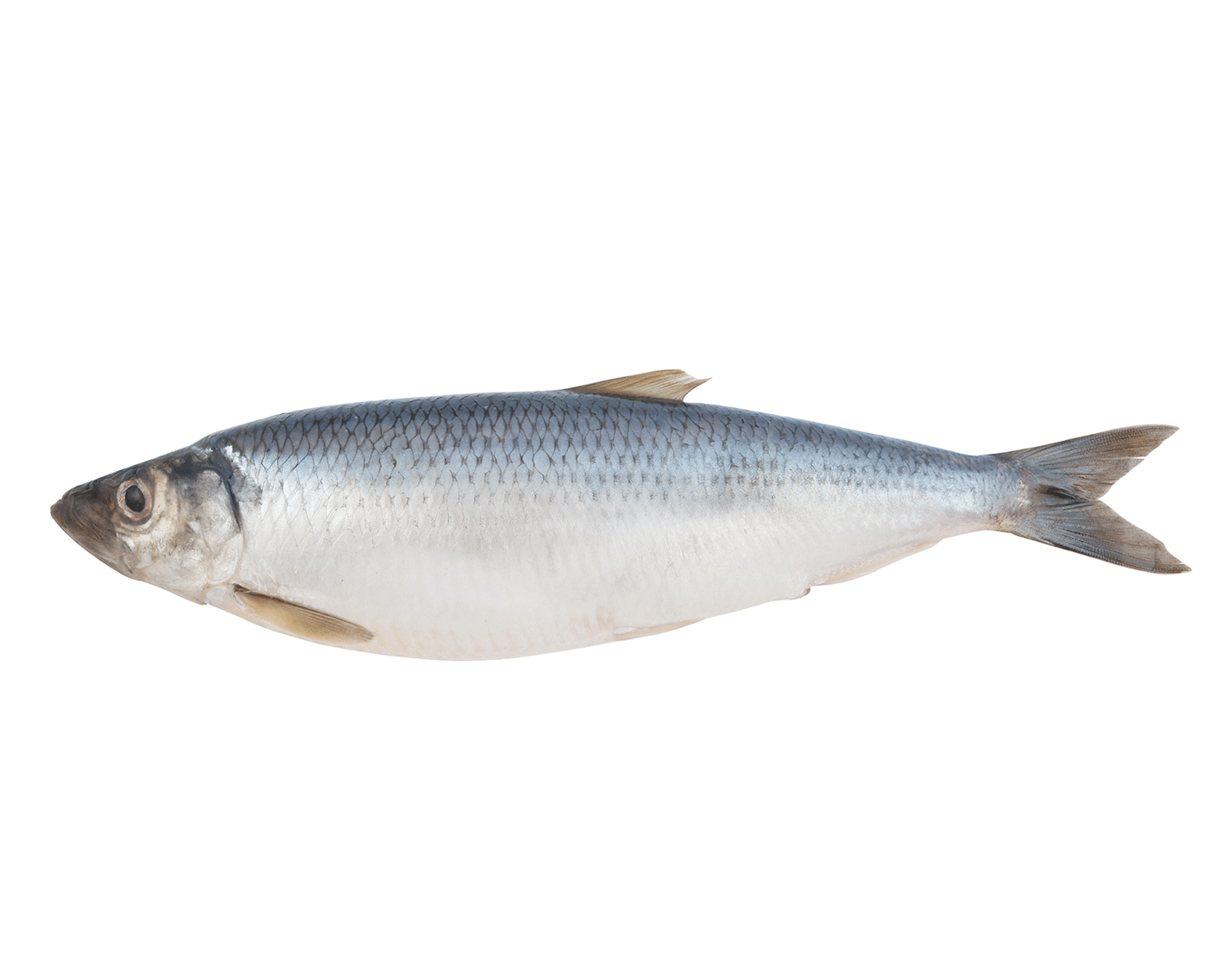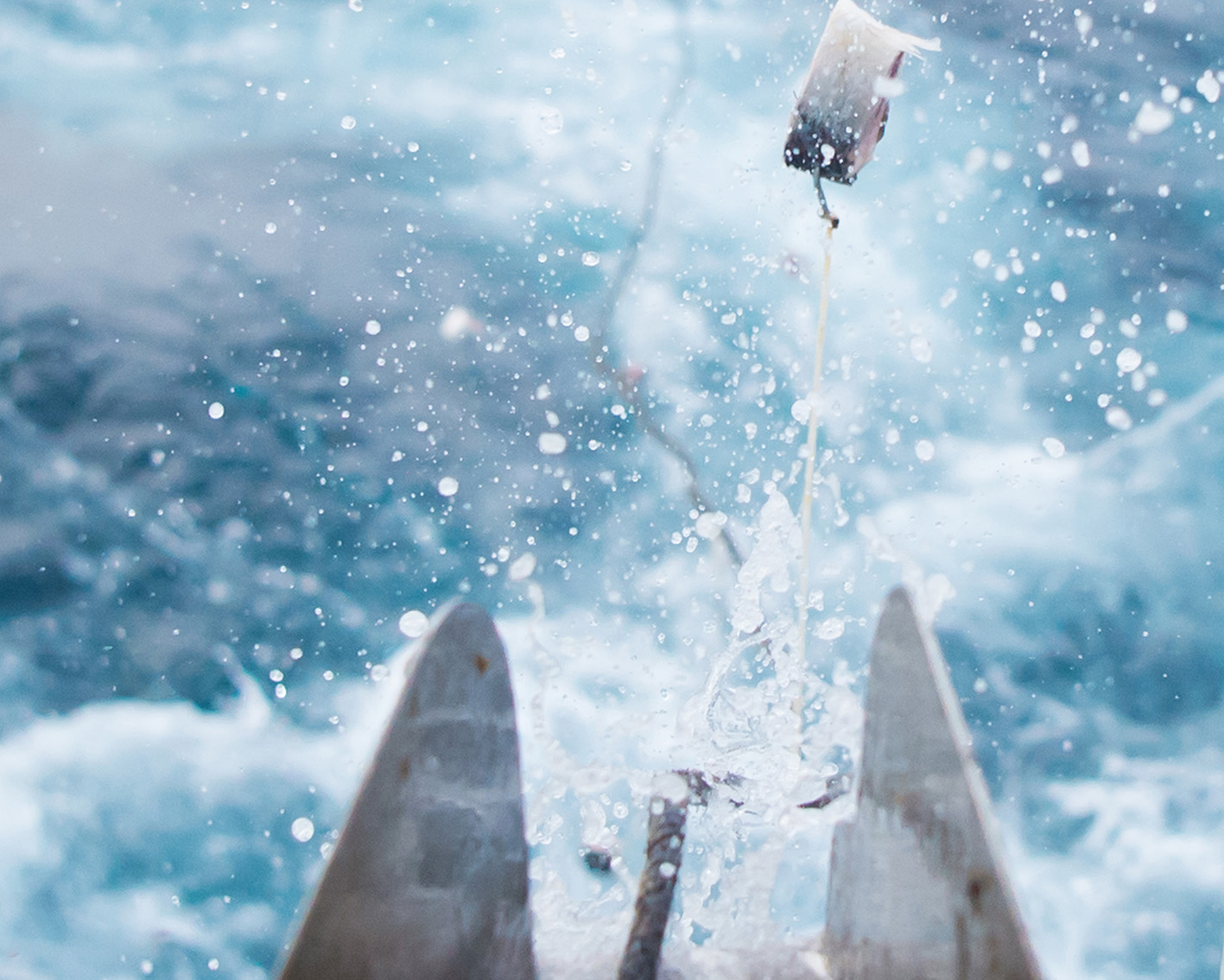Bait
Bait is meant to attract fish, induce them to bite and preferably swallow it. The scent from the bait should disperse in the sea. It is commonly believed that fat bait gives out more scent than lean bait.
When Autolining the quality of the baitfish and the thawing process is essential to succeed. The consistence is important when you bait up to six hooks per second.
Different species of baitfish are being used in our baiting machines around the world. Here we present a range of recommended species, the same species used during the development and testing of our machines.
Baiting
The mouth of a fish is bony presenting the hook with little flesh to penetrate and attach to. The fish often take a piece of bait into its mouth, taste it, and spit it out again without being hooked. Atlantic cod have been observed doing this repeatedly before finally deciding to swallow it. For that reason, it is very important that bait is firmly attached to the hook. If the bait is too loose, or for any other reason is not firmly attached to the hook small fish may easily nibble on it until nothing is left.

To ensure that the bait is firmly attached to the hook it is common practice among seasoned hook and line fishermen to “double crouch” the bait. This means pushing the hook through the skin on one side and out through the skin on the other side, as shown. Fig.25
With a Mustad Auto-baiter the hooks and line are pulled from the storage magazines through the baiting machine and over the stern. The bait is placed on a spiked conveyor chain and feds into the baiting machine where the hooks passing through trigger a knife that cuts the bait at a pre-set size. The RotoBaiter function secures precision baiting, and the bait is “double crouched” on to the hook. The most advanced baiting machine can deploy up to six hooks per second at a baiting percentage averaging 95 – 97%. The baiting machine is operated by one crewmember who feeds the bait onto the conveyor chain.
Baitfish
Good quality squid, sauri, mackerel and herring are the most used baitfish for Autolining in the North Atlantic. Bait is stored in a freezer and must be thawed out to the right consistency before use. The size of each piece of bait will vary according to the hook size and type of bait. Between 45lbs/20 kg and 65 lbs/30 kg. per 1,000 hooks is common.
Some of the baitfish used for hand baiting is too big for use in the Mustad Autoline baiting machine unless split and cut. We recommend using whole fish from 200 to 250 gram per fish for best baiting efficiency. (around 10″ length and between 7 to 9 ounces in weight)
The sauri, mackerel, squid and herring make good bait, but they are not all equally good in all respects, at all times of the year or for catching all kinds of fish. If possible, learn from the professionals who have been working the grounds before you.
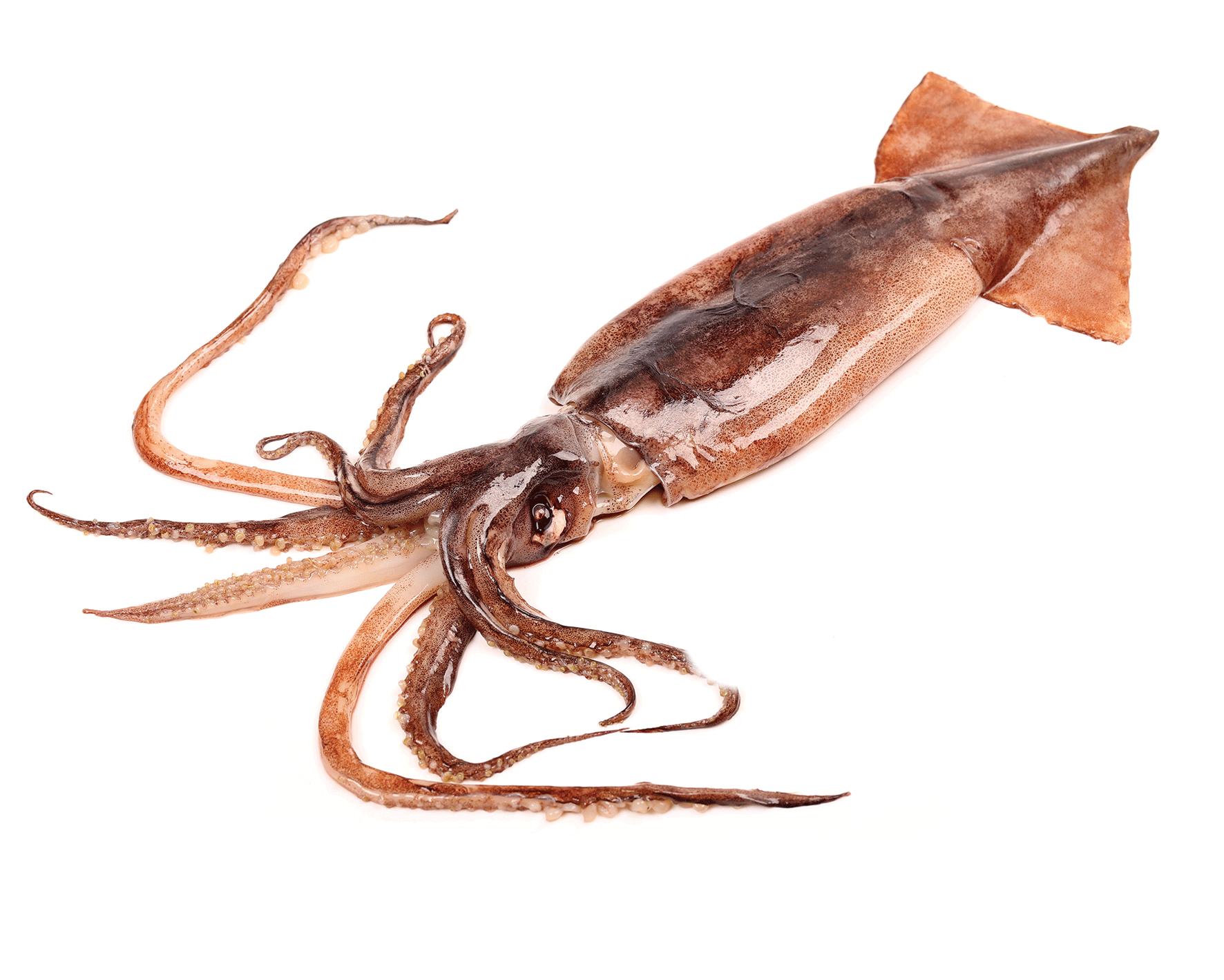
Squid (Illex argentinus)
Several species of squid are used as Autoline bait, Argentine shortfin squid is the one used in the Barents Sea.
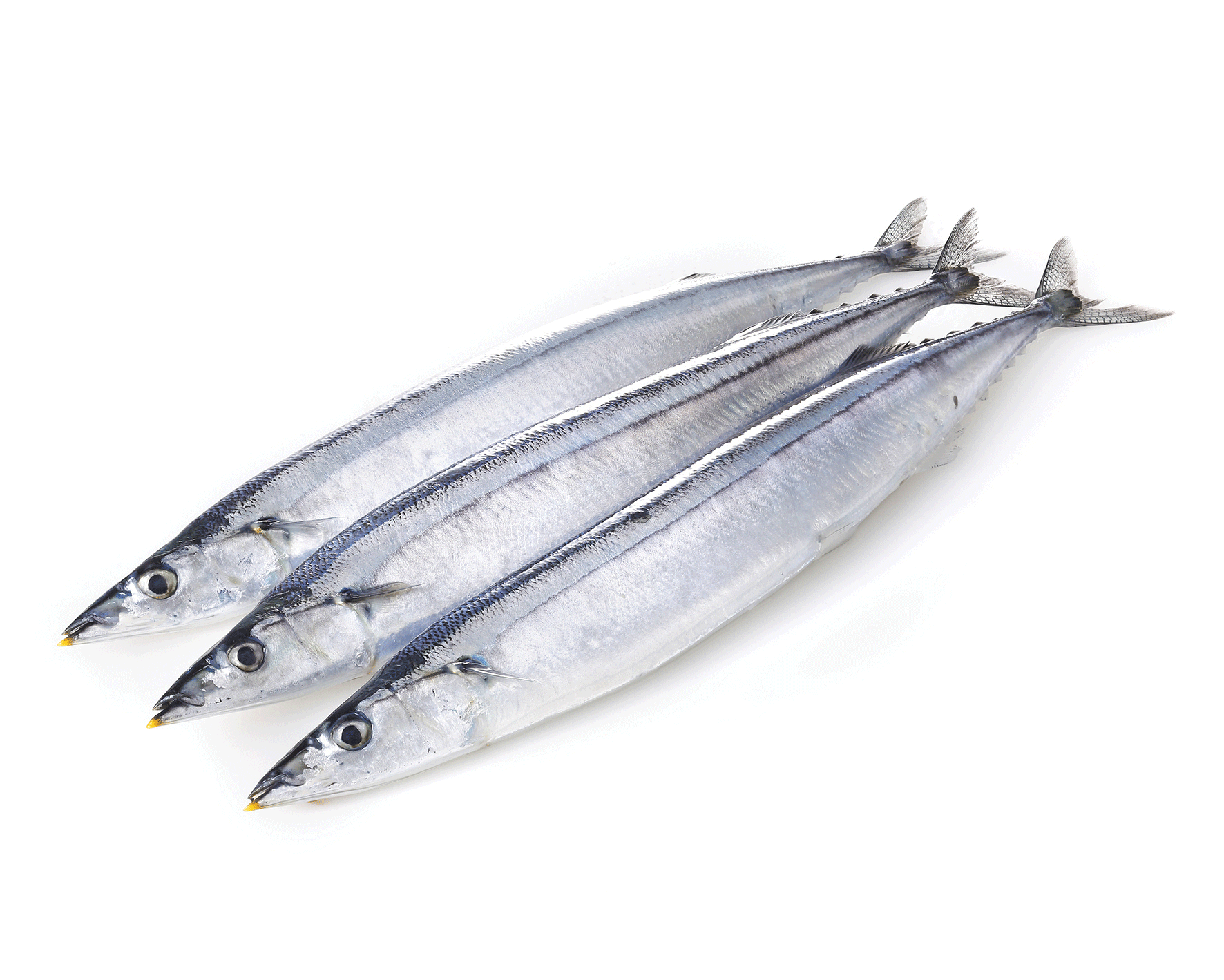
Pacific Saury (Colobis saira)
This species has gained terrain in the Autoline fisheries over the latest few years.
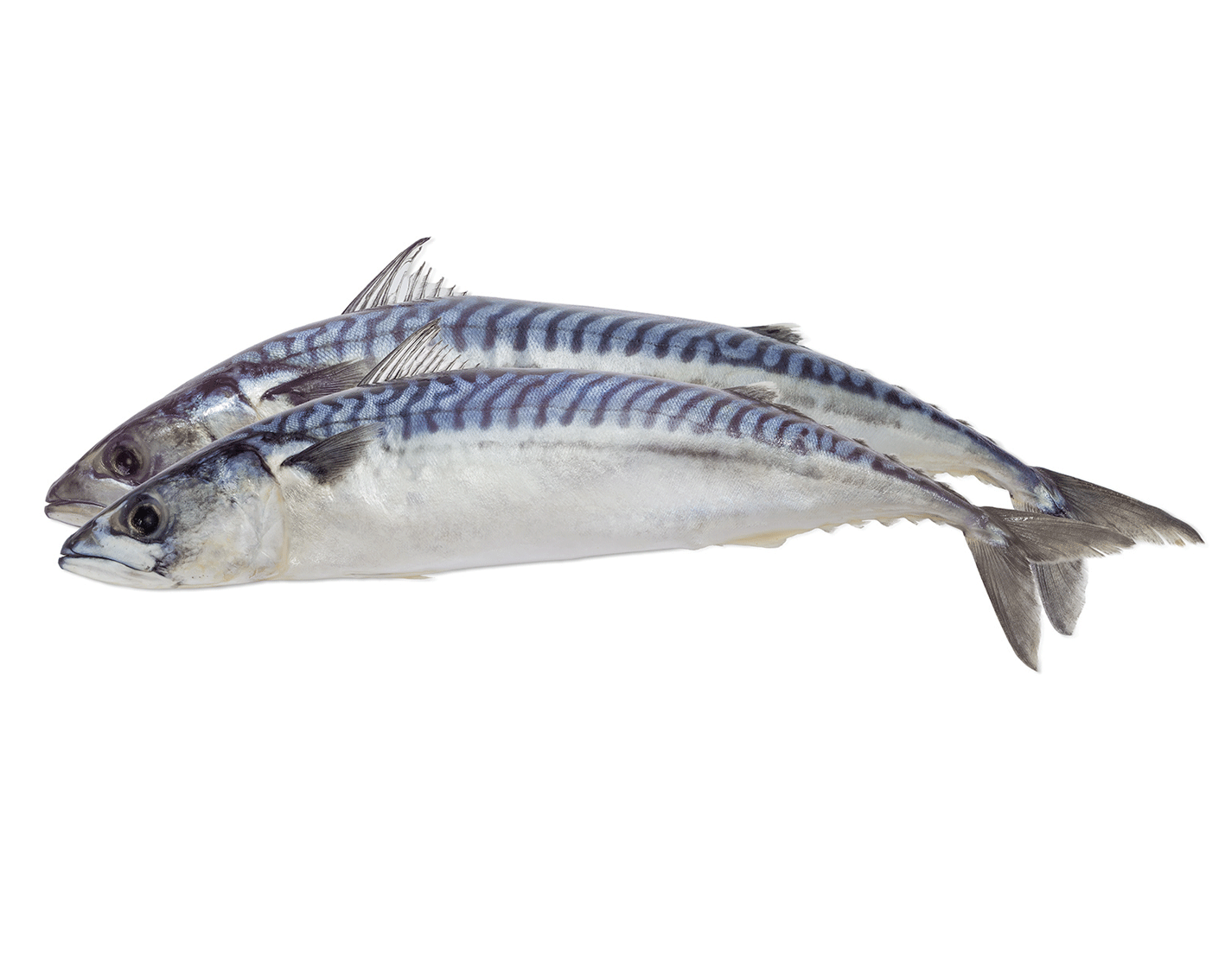
Atlantic Mackerel (Scomber scombrus)
Atlantic Mackerel is the most common baitfish for hand baiting in the Barents Sea.
Quality
The quality of the bait fish is essential to succeed. The consistence of the bait is important when you bait up to six hooks per second.
It’s difficult to judge the bait quality before it is thawed. The fish skin should be undamaged, no yellow discolouration along the belly, the eyes bright and the gills should appear fresh and red.
Brine frozen bait is better than blast frozen but is usually more expensive. Brine penetrates and toughens the skin, a process which is particularly successful with mackerel.
Storage, thawing out and preparation of bait
The thawing of bait is an important stage to ensure optimal baiting by a Mustad Autoline baiting machine, the bait shall be medium thawed to a consistence optimal for high-speed baiting.
The best way to store bait is in a freezer located on the aft deck. If the trip is likely to last for several weeks, a freezer is essential.
When you want to use bait, take it out of the freezer and spread the boxes on shelves until you can separate the bait without damaging the skin. It is hard to predict the correct thawing time. Only trial and error will tell. Whatever you do, never leave it for too long and allow it to go flabby and soft.
Bait consumption depends on the number of hooks to be baited, the size of the baitfish and the pre-set size of the knife when cutting the baitfish. To begin with, just as a suggestion you may start with about 55 lbs/25kg of herring, 65 lbs/30 kg of mackerel, or 48 lbs/22 kg of squid per 1.000 hooks.
Make sure that most of the frost is out of the bait before you start breaking it apart, otherwise you will use too much time and damage the fish. On the other hand, if you leave bait thawing for too long, the outer layers will be too soft while the core will still be frozen. It is therefore important to break apart the bait as soon as possible.
When using a baiting machine, the best way to thaw herring or mackerel is to use water. After separating the bait, drop it into a tank and add water until the bait is just covered. This results in a defrosting, consistency and good baiting characteristics.
Mackerel is somewhat fatter than herring and needs more time to thaw out. It often needs an hour more than herring before you can use it. You should be able to straighten it out and feel when it is still frozen inside.
Big mackerel must be filleted immediately before baiting. The fillets cannot be left in the water since they will thaw out quickly, even when submerged. If possible, put up a table next to the baiting machine and cut the mackerel there.
There are several ways to do filleting of fish. Above we show you one way. Hold the mackerel with its tail down and cut downwards from the gills. Stop cutting half way between the anal opening and the tail, then open the fish. This gives you a baitfish which is half a length longer than an ordinary mackerel. This method also makes it easier for the operator to feed the bait into the baiting machine. The belly part of the bait must be large and firm enough for the hook to penetrate.
Squid is not recommended to be thawed out in water. It should be thawed in air and leave it on shelves after separation. Do not thaw out the squid completely. When you can bend it and feel it crackling inside it is ready to be fed into the baiting machine.
Baiting machine
Place mackerel, sauri and herring on the conveyor chain of the baiting machine with their backs down and their heads facing the knife. Press the fish down firmly onto the spikes until you feel them penetrate the skin on the fish. Hold the fish there until it goes under the first pressure plate. You may have to straighten the fish out, so that it is in contact with the spikes. It is important to let the fish overlap, otherwise you will get poor baiting between each baitfish.
Mackerel fillets should be placed with the skin side facing the spikes on the conveyor chain.
Squid must be well straightened out and pressed firmly onto the spikes with their tail facing the knife. Chop off the tentacles of large squid. They are in the way and will not be hooked in any case. Very large squid must be cut in half.

